Southeast Asia is labelled as a popular smuggling hub for illegal trading; whether it is human trafficking, drug abuse or illegal animal trade. These practices are driven by poor monitoring and law enforcements within the region. While money is the usual modus operandi for other criminal activities, illegal wildlife trade is often backed by customary beliefs and demands from TCM (traditional Chinese medicine). Though it has not been proven by the modern medical society, many wildlife including pangolins, bears, and tigers are used in TCM and traditional cuisines.
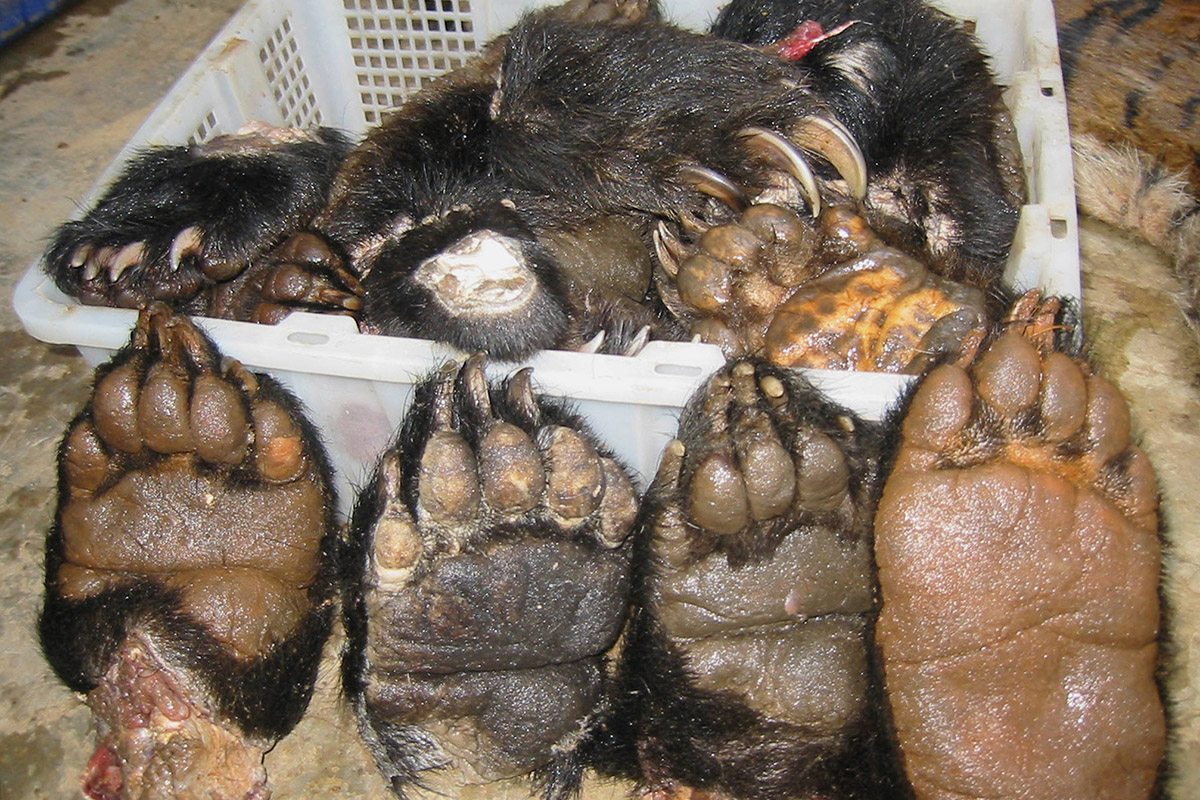
In this undated handout picture released 21 September 2004 by the International Wildlife Protection Group shows bear paws seized in a raid in Nonthaburi province of Thailand. (AFP Photo/International Wildlife Protection Group)
First introduced in the Shang dynasty, bear paws and gall bladders became a dish that decorated first class banquets throughout China. Fast forward over 3,000 years to 2017, the Asiatic black bears and sun bears, while being protected, are still endangered due to the lavish taste buds of Beijing’s high society. The meat itself is described to be sweeter than shark fin soup, another controversial delicacy that killed over 100 million sharks a year. A serving of bear paw soup can go up to 1,000 dollars a bowl. This delicacy is not just popular in China but its neighbouring countries such as Cambodia, Laos, and Vietnam. In July 2017, Vietnam officials from the VNFOREST (Administration of Forestry) agreed to rescue 1,000 specimens in order to end the bear bile trade.
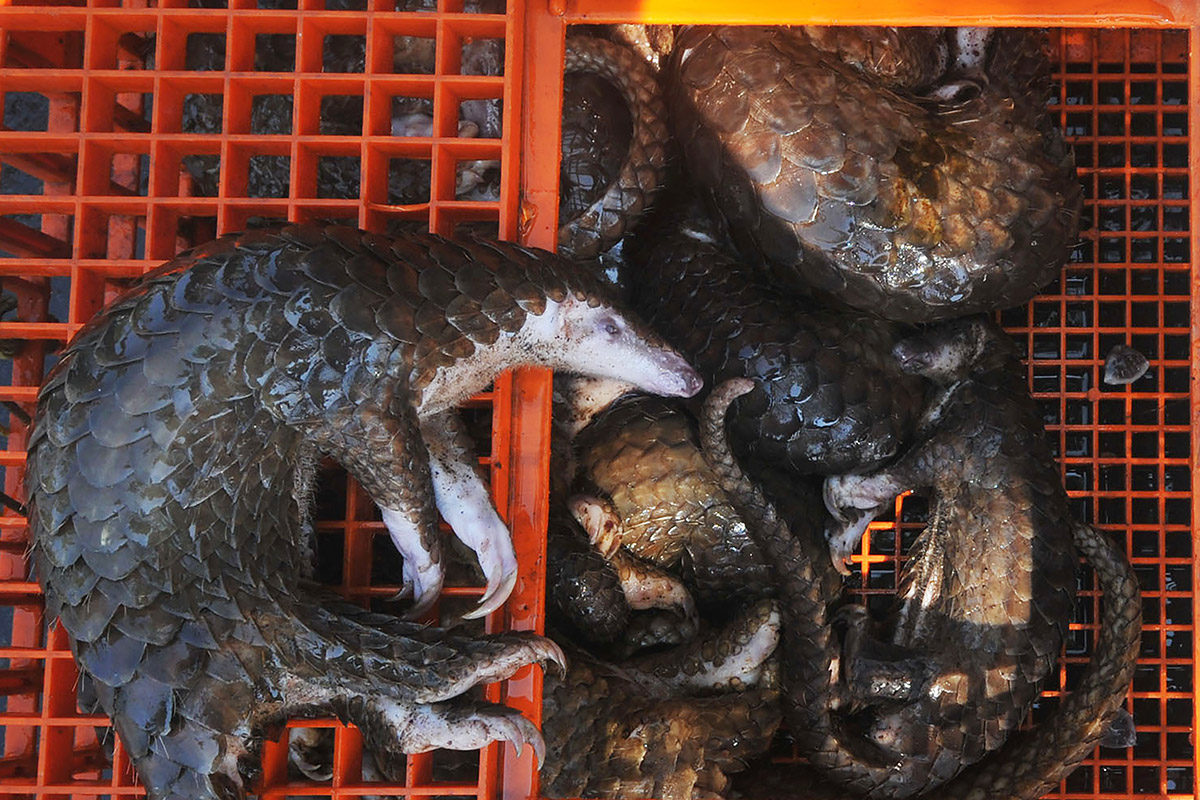
In this picture taken on June 13, 2017 shows dead pangolins seized by authorities in Belawan, North Sumatra. (AFP Photo/Gatha Ginthing)
The pangolin is known as the world’s most trafficked wild mammal for its meat and scales. This critically endangered mammal, while available in eight species across Asia and Africa, is believed to be good for your health and sex drive. In the first half of 2017, over two tonnes of Pangolins have been confiscated in popular transit ports such as Jakarta and Kuala Lumpur; meat, scales, and some even alive. Also used in TCM, pangolin meat has been found on the plates of "food tourists" in countries like Vietnam and Lao; as for the scales, they are known as an ingredient used in narcotics – specifically "sabu-sabu" the local name for crystal meth in Indonesia. We do not know the exact number of this creature’s total population, but it is documented that more than one million have been killed over the last ten years.

In this picture taken on October 17, 2016, Indonesian wildlife officials show off seized animal parts, including a tiger skin, deer genitalia and pangolin scales, in Medan, Indonesia. (AFP Photo/Gatha Ginting)
Like pangolins and bears, certain parts of tigers are also believed to be ailments to illnesses and aphrodisiacs to enhance sex drive. Tiger wine is a popular grain-based beverage that sells from 20 dollars a shot glass within the Golden Triangle Special Economic Zone in Lao, the concoction entails tiger penis, bones and skeletons that are brewed for months. The same area in the Bokeo province sells plates of tiger meat priced at 45 dollars a pop and bowls of bear paw stew.
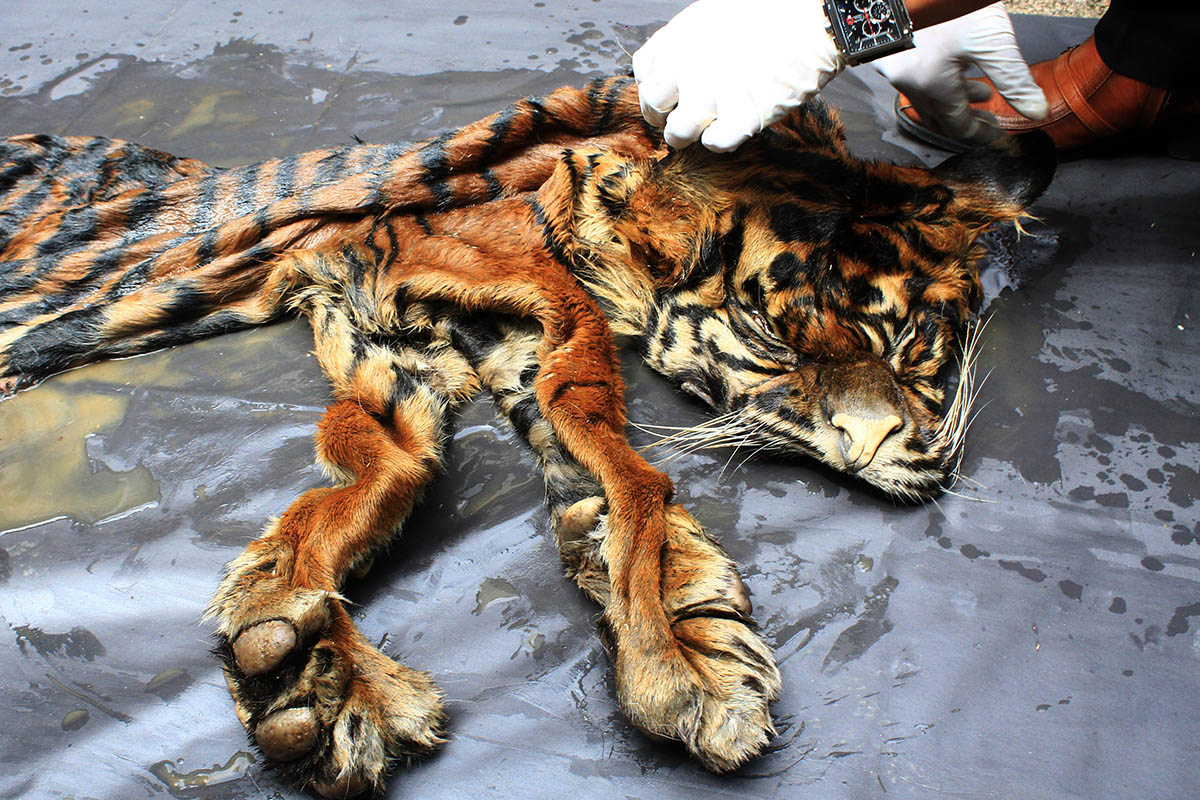
In this picture taken on October 17, 2016, an Indonesian wildlife officials show off seized animal parts, including a tiger skin, in Medan, Indonesia( AFP Photo/Gatha Ginting)
Tiger farms are not uncommon in Asia; some are even endorsed by their respective government. The infamous tiger temple in Thailand landed itself in controversy back in 2016 for being a farm involved in illegal tiger trades after a freezer of 40 frozen dead tiger cubs were found; it is believed that wild tigers were poached and passed off as captive-bred. Older tigers that are not able to be controlled often disappear from farms and then sold in the black market. These actions clearly violated the treaty curated by the CITES (Convention on the International Trade in Endangered Species) which was signed by China and ASEAN (Association of Southeast Asian Nations) governments, stating that tigers are only to be bred for conservation and not for commercial use.
Beyond culinary demands, the illegal trading of wildlife is also due to human's desire for aesthetic pleasantry; these demands are responsible for endangering elephants and rhinoceroses. While elephant tusks are made of ivory, rhino horns are made from the creature’s keratin; the same substance that grows in human hair and nails. Both parts of these mammals are the main cause for why they are traded illegally.
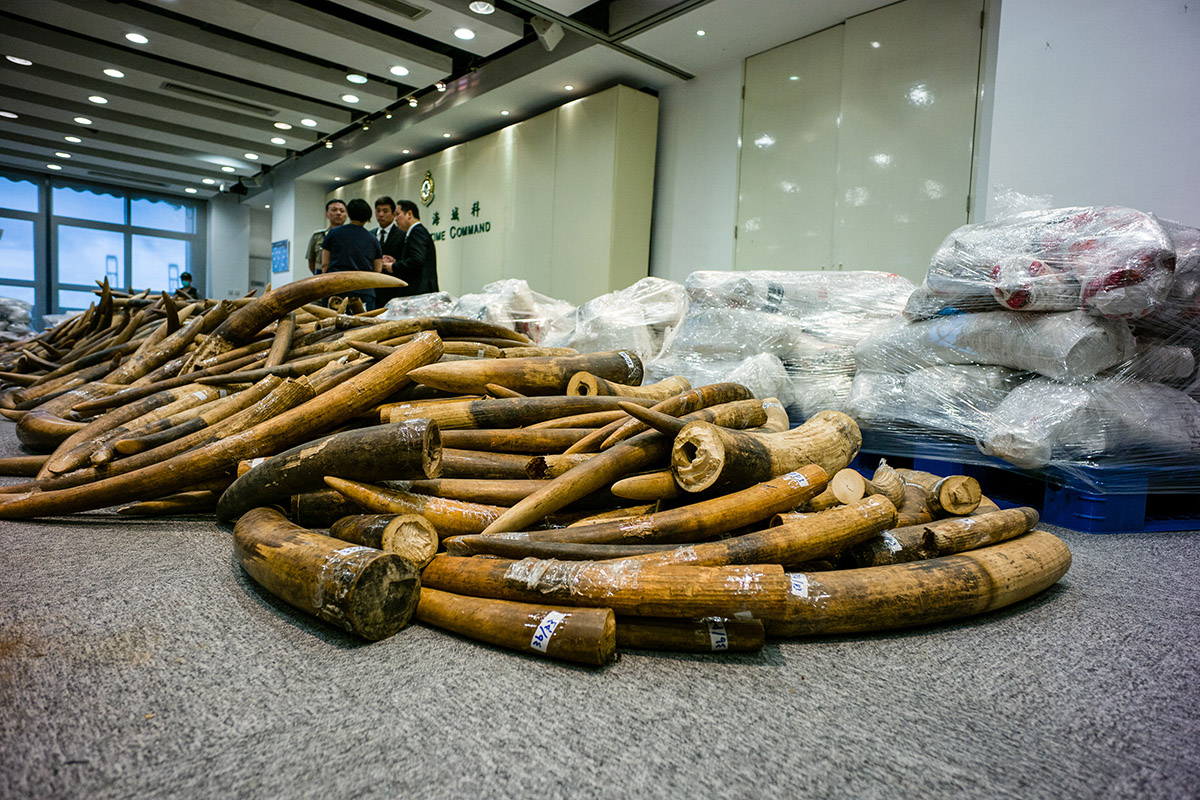
Seized elephant ivory tusks are seen during a press conference at the Kwai Chung Customhouse Cargo Examination Compound in Hong Kong on July 6, 2017. (AFP Photo/Anthony Wallace)
Sold up to 1,880 dollars per kilogram, ivory earned the name of "white gold" and a reputation of being as valuable, if not more than blood diamonds. Tom Milliken from the Elephant Trade Information System states that the smugglers are "African-based and Asian-run crime syndicates". This is driven by the use of ivory in decorations, Malayan weapons, jewellery, traditional Chinese medicines and even musical instruments; it was only in 1978 that Yamaha and other major piano creators halted the production of their ivory keys due to the ban against the trading of ivory; four decades later ivory is still one of the heavily traded commodities in the black market. The FKGI (Indonesian Elephant Conservation Forum) reported that at least 150 elephants were killed between 2012 and 2016; unreported cases are believed to be much higher.
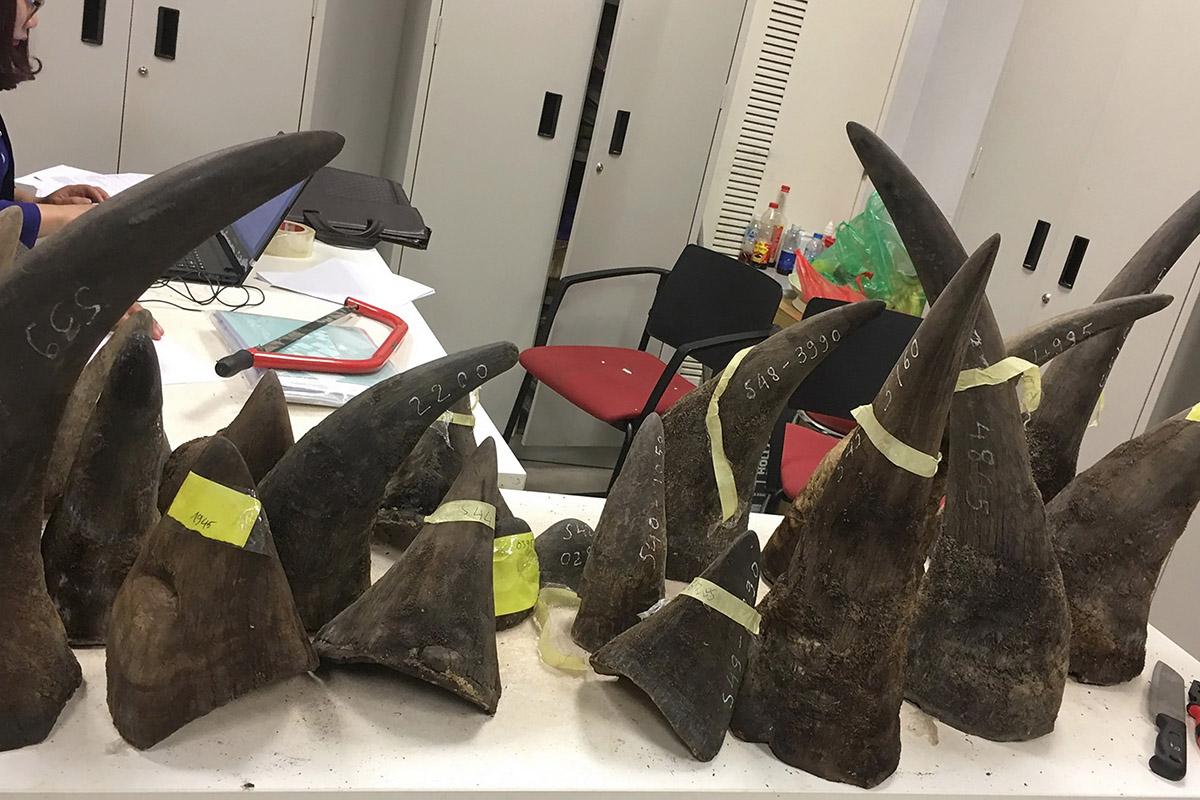
Seized smuggled rhino horn are displayed at a customs office in Hanoi, Vietnam on March 14, 2017. (AFP Photo)
Much like elephants, rhinoceroses are a popular target for poachers. Unfortunately, a survey in 2015 states that there are less than 30,000 rhinos left worldwide. These creatures are divided into five species – with the Sumatran rhinos being critically endangered for having only less than 100 specimens left globally, the white northern rhino native to Kenya is left with only the last three specimens, and the Javan rhino is down to 58 specimens. Rhinoceroses are hunted and poached in the wild for their horns that weigh up to 6 kilogrammes and priced up to 100,000 dollars per kilo. Known in traditional Chinese medicine to be similar to the elephant tusks, rhino horns are most popular in Vietnam for being the miraculous cure for cancer that allegedly put a former politician into remission after he took the horn in powder form as medicine in 2012.
Decorations and traditional culinary are not the only reasons that threaten these endangered wildlife in Southeast Asia, some are traded as exotic pets.
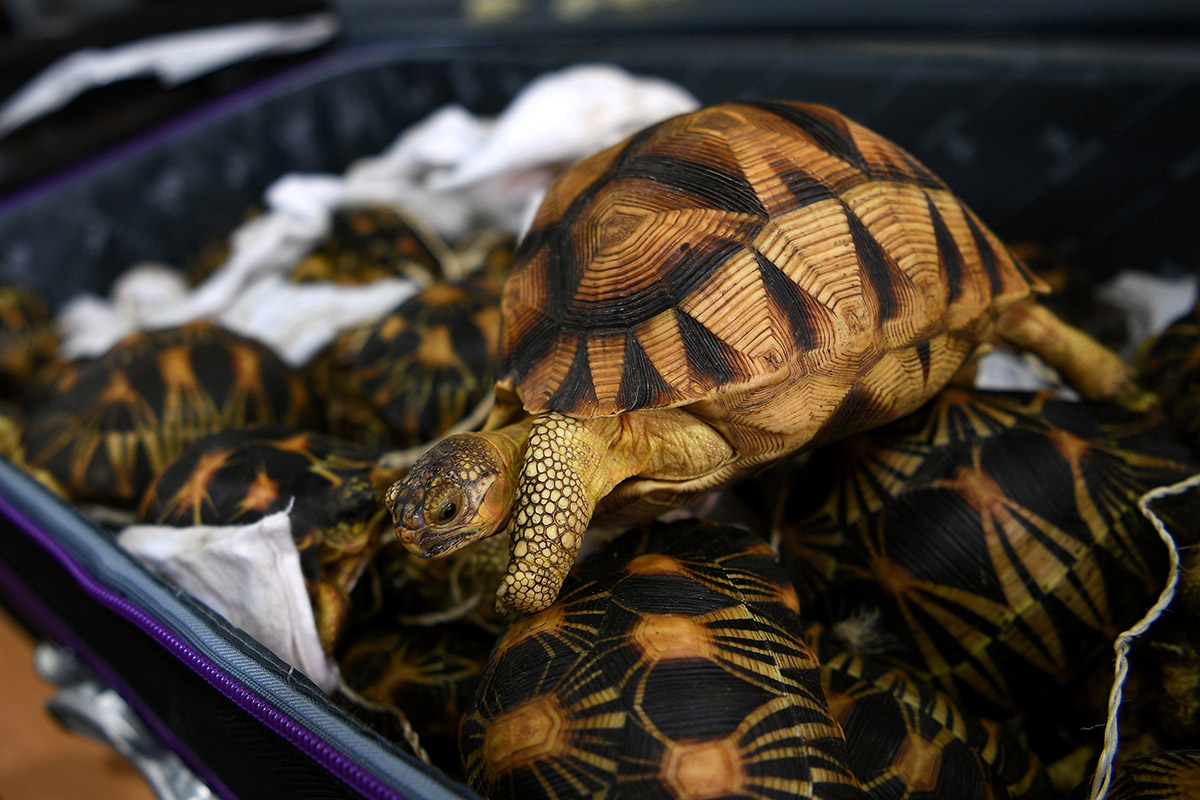
A seized endangered ploughshare tortoise is seen inside a bag following a press conference at the Customs Complex in Sepang, Malaysia on May 15, 2017. (AFP Photo/Manan Vatsyayana)
The Indian star tortoise is the most traded tortoise species globally, it is currently listed as vulnerable by the IUCN Red List of Threatened Species. While trafficking these tortoises, smugglers have the opportunity to pack in other rare tortoises like the ploughshare and radiated tortoise. According to the National Geographic, the nature of their shells and slow metabolism rates are the traits that helped tortoises to outlast even the dinosaurs, but these same traits are the reason why these species are exploited as well – they’re easy to pack in bulk and because of their slow metabolism rate, the star tortoise are very resilient during transport. In the first half of 2017, over 280,000 dollars worth of tortoise trades have been busted in Southeast Asian nations including Malaysia, Indonesia, and Thailand.
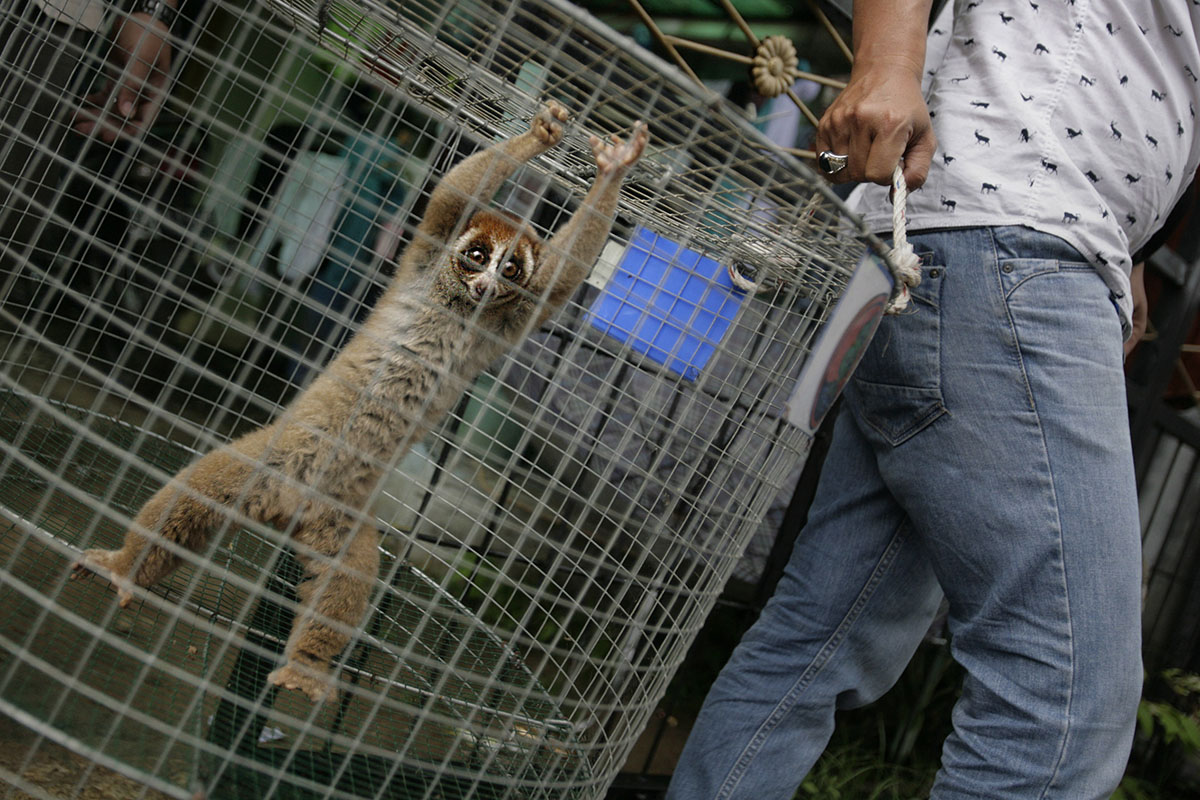
In this picture taken on April 14, 2015, a member of Indonesia's Nature Conservation Agency (BKSDA) seizes an endangered slow loris from a pet owner in Banda Aceh, Indonesia. (AFP Photo/Chaideer Mahyuddin)
In another case, a video with 5 million views has made the Slow Loris an overnight sensation among exotic pet owners worldwide. Only later it was pointed out that the mammal was actually in pain from the tickling shown in the video. While many are aware of the bigger primates like the Orang Utan and mammals like the Sumatran Rhinoceros, little is known about these furry creatures. Researches by the Little Fireface Project are being done to study the physiological characteristics of the Javan Slow Loris to fully understand the tiny mammal through vegetation surveys, spatial and behavioural analysis. While conservation programmes and laws are being implemented throughout the region, illegal poaching and exotic pet traffic is still a major threat to these specimens. These nocturnal creatures are often forced to stay awake during daytime when in the wild they would only be active at night; their big eyes are seen as a major selling point as exotic pets even in 2017.
According to TRAFFIC’s senior communications officer, Elizabeth John, Southeast Asian countries need to make combating animal cruelty a key issue. At the moment, for many countries, wildlife protection and conservation is at the bottom of their priority ladder, and it is making a vast difference to the population of these wildlife. Examples can be seen in the descend of elephant and rhino populations in Southeast Asia which scientists worry might be followed with their extinction.